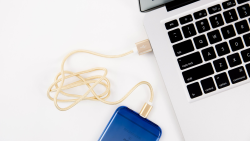
Increasing Conversion Rates: WHY Audience Temperature is Key to Greater Conversions
February 5th, 2020 · 7 min read
Do you want more conversions for your marketing efforts? The first step is understanding that your audience’s buying temperature is the driving force behind increasing conversion rates.
From Lead to Client
Let’s start by talking about those conversion rates. You drive traffic to a website to get people to do something—call your office, sign up for your newsletter, download a report, make a purchase, and so on. When someone does what you ask them to do, you have a conversion. Take a look at the relationship between your “asks” and those desired customer actions: are you converting traffic into paid customers at a high rate? While hitting that sweet spot is a laudable goal, chances are that you aren’t...yet.
Your conversion rate is measured by metrics such as the number of eyes that saw that last email blast you just sent. That number is compared against the number of new clients that became paying customers due to that marketing effort, or another marketing format included in your measurements. Those tend to be low numbers, typically falling below 3% on average. There are, however, ways to get those stats up, and they all start with a few small changes.
Familiarity Is Key
Did you know that a portion of your target audience is really hot? No, we won’t say who. Some of your audience is really cold, too - borderline frigid, in fact. But we aren’t talking about looks and personality here: we’re talking familiarity.
Have you ever played the hot and cold game while looking for a present? The closer you get to the desired object, the “hotter” you are and the further you stray from it, the more “cold” you become. Borrowing that analogy for a moment, your firm is the object, and your client is the blindfolded victim who got suckered into the game unknowingly. Many of your potential clients don’t even know they are playing the “hot and cold game” or what the rules are supposed to be. They aren’t engaged in the exciting pursuit for the gift, they’ve blindly stumbled into the game itself, and thus aren’t likely to be very good at it.
Similarly, the clients who have never heard of you before are likely to be fairly disengaged at your first attempts to market to them. Ask yourself if you’re treating these potential customers the same, or if you’re differentiating between familiarity levels when blasting out your content marketing for their consumption. If you’re treating them equally, don’t be surprised if your conversion rates reflect a rather “chilly” outcome.
Conversion Rate and Audience Temperature
Not all traffic is created equal. To increase your conversions, it is important to know where your customers fall within this “temperature” scale in order to market to them effectively. When you understand the difference between different types of traffic, it should help you transform your cold traffic into hot conversions.
One of the biggest marketing mistakes that drains time, money, and energy out of a campaign is attempting to sell to “cold” traffic: customers that have no knowledge of your brand, and aren’t usually actively looking for a solution. Trying to close cold traffic is a mistake because at this stage, visitors know nothing about your business and what you offer: there’s no compelling reason for them to take action. In fact, it’s nearly impossible to close cold traffic because the element of “trust” is missing - you haven’t learned anything about your customer, either. The best approach to this scenario is to direct cold traffic to a landing page or lead capture page (also called a squeeze page) where users are added to an email marketing list. From there, you can begin lead-nurturing, building trust and rapport, and creating customers that are more likely to buy the next time you give them the chance to.
Incoming “warm” traffic arrives with a basic level of knowledge about your business and a less substantial hurdle to clear en route to conversion. It’s important to educate your prospects at this stage by providing information about your business, products, and / or services. This is the time to establish value and highlight what makes you different and better in the marketplace. Address their pain points and explain how what you’re providing is the solution to all of them.
“Hot” traffic offers smart companies the greatest potential for conversion. At this point, prospects know your brand, recognize the value of your offer, and are the closest of the three temperature classes to the buying stage. They just need a little nudge in the right direction, like an easy-to-navigate sales page.
Ways to Warm Up Buying Temperature
The key takeaway here is learning how to “warm-up” traffic by optimizing content for each stage of traffic:
- The best approach to the “cold traffic stage” is to provide truly exceptional content. Since this is also the “pre-trust” stage, you’ll have to deliver immediate value to the prospect to keep them interested. Provide content so valuable that people would pay to get access to it. This is the giving stage: think tutorials, explanations, 101-level information about their pain points. Don’t ask for too much information on form fields.
- Retarget with more value at the “warm traffic” stage. At this point, provide even more content as you warm up your audience. Address more nuanced pain points that go beyond the “101” stage: assume they’ve already seen and read the basics.
- With the “hot traffic stage,” your lead has shown interest, and they’re ready for sales copy or a solid sales pitch. By the time traffic is considered hot, it’s time to deliver content that motivates them to pull the proverbial trigger and buy.
For Greater Conversions - Give Before You Take
Take a moment to ask yourself: do you enjoy being sold to? Chances are the answer to that is a firm no. It feels impersonal and high-pressure; it puts you on the defensive and makes you uncomfortable or irritated. Your prospects feel the same way! With that in mind, take it easy in your messaging and focus your content marketing on being helpful, not making sales. When you give them something truly valuable first, you’re empowering your audience to know, like, and trust you, rather than being suspicious of your intentions and short-tempered at high-pressure sales tactics.
Increase Conversions Delivering the Right Content
 The average prospect engages with multiple pieces of content before buying. They might start by signing up for your podcast, follow it up by downloading a case study, reviewing customer testimonials, and finally, being ready to buy. When you deliver the appropriate content and provide value at each stage within the sales cycle, you’ll be leaving your buyers a breadcrumb trail of sorts. This will nurture the lead and improve their long-term relationship with your brand.
The average prospect engages with multiple pieces of content before buying. They might start by signing up for your podcast, follow it up by downloading a case study, reviewing customer testimonials, and finally, being ready to buy. When you deliver the appropriate content and provide value at each stage within the sales cycle, you’ll be leaving your buyers a breadcrumb trail of sorts. This will nurture the lead and improve their long-term relationship with your brand.
This concept is demonstrated clearly in the “Content Marketing Funnel” concept. The content marketing funnel is a step-by-step process that converts prospects into leads and leads into customers.
There are three key stages of a content funnel:
- Awareness - People become aware of your brand through the following content types: social media posts, ads, blog posts, landing pages, videos, and podcasts.
- Evaluation - At this stage, the prospect takes a closer look at your service or product, evaluating it against competing solutions. The ideal content types for this stage are books, case studies, white papers, webinars, courses, reports, guides, and assessments.
- Buy - During the closing stage of your content funnel, you can provide content to help close the sale, such as social proof, customer stories, or competitive comparisons.

Customer Behavior and Analyzing Your Web Traffic
Analyzing web traffic gives you insight into customer behavior, the most popular content, and your total web conversions. Understanding the behavior of both current and prospective customers allows you to focus on higher converting content, letting you mimic the structure and/or subject(s) for better future results.
Increase Conversion Rates with KPIs
Analytics tools break down critical content Key Performance Indicators or KPIs. These include:
- How many visitors are reading your content?
- How much time visitors spend reading your content?
- Bounce rate - how many visitors “bounce” or leave the page quickly, or without engaging with it.
- Collective time spent reading your content.
With this insight available to you, you’ll be better able to plan fully informed content strategies and speed up conversion increases. Depending on what sort of insights the data offers, you can improve your chances to bump conversion up by, for example, adding additional call to action buttons, subscribe and download links, and more.
Improving conversion rates is a never-ending quest, and understanding audience buying temperature is a critical element of succeeding at it. When the goal is increasing conversion rates, your biggest allies will be great data, careful examination of your traffic temperature, and a willingness to adjust your marketing strategy to find your sweet spot.



